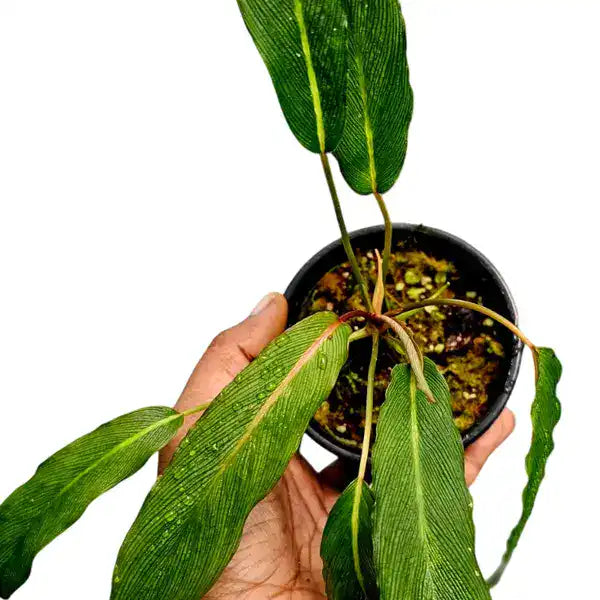
Homalomena Sp
Selling Size : Single Plant | Pot Included | Secure Packing | Free Shipping
Homalomena is a genus of beautiful tropical plants in the aroid family (Araceae), which also includes popular houseplants like Philodendron and Alocasia. Homalomena are native to Southeast Asia and are prized for their lush, often heart-shaped leaves that can come in a variety of colors and patterns.
Here is a general care guide for Homalomena plants :
Light
Bright, indirect light is best. Homalomena plants grow on the forest floor, so they are accustomed to dappled, filtered sunlight.
They can tolerate lower light conditions, but their growth may slow, and the leaves might lose some of their vibrant coloration.
Avoid direct sunlight at all costs, as it will scorch the leaves. Burnt or crispy leaf edges are a common sign of too much direct sun.
Watering and Humidity
Keep the soil consistently moist but not soggy. Homalomena are sensitive to both overwatering and drying out completely.
Water when the top inch or so of the soil feels dry to the touch. Use lukewarm water, as cold water can shock the plant.
High humidity is crucial. Homalomena thrive in humidity levels of 50% or higher, and ideally even higher. They are excellent plants for a steamy bathroom or a terrarium.
To increase humidity: Use a humidifier, place the plant on a pebble tray with water, or group it with other plants.
Soil
Use a loose, well-draining potting mix that also retains some moisture.
A good aroid potting mix or a regular potting mix amended with materials like orchid bark, perlite, or coco coir will work well. The goal is a mix that provides both good drainage and aeration for the roots.
Temperature
Homalomena prefers warm, stable temperatures between 65-80°F (18-27°C).
Protect them from cold drafts and temperatures below 60°F (15°C), as this can cause the leaves to yellow and the plant to suffer.
Fertilizer
During the active growing season (spring and summer), feed your Homalomena with a liquid houseplant fertilizer diluted to half-strength once a month.
Stop or significantly reduce fertilizing during the fall and winter months when the plant's growth naturally slows down.
Propagation
Homalomena can be propagated by division of its rhizomatous roots or by stem cuttings.
Propagation is best done during the spring.
Other Tips
Pruning: Remove any yellowing or damaged leaves by cutting the leaf stalk at its base to keep the plant healthy and encourage new growth.
Toxicity: Homalomena, like other aroids, contains calcium oxalate crystals and is considered toxic if ingested. Keep it out of reach of pets and children.
Pests: Keep an eye out for common houseplant pests like spider mites, mealybugs, thrips, and aphids.

